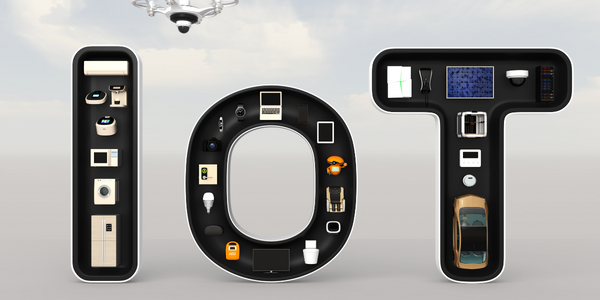Tulip Helps DMG MORI Digitize the Spindle Assembly Line
公司规模
Large Corporate
地区
- Asia
- Europe
国家
- Germany
- Japan
产品
- Tulip I/O Gateways
- Spindle Assembly Apps
技术栈
- No-code applications
- IIoT Gateways
实施规模
- Enterprise-wide Deployment
影响指标
- Productivity Improvements
- Customer Satisfaction
- Innovation Output
技术
- 平台即服务 (PaaS) - 设备管理平台
- 分析与建模 - 实时分析
适用行业
- 设备与机械
适用功能
- 离散制造
- 质量保证
用例
- 机器状态监测
- 预测性维护
- 过程控制与优化
服务
- 软件设计与工程服务
- 系统集成
关于客户
DMG MORI is a leading international manufacturer of machines and machine tools, serving customers in over 42 industries and 79 countries. The company aims to be a 'Global One Company,' leveraging the best of their German and Japanese heritage in the modern interconnected world. DMG MORI is known for building cutting-edge innovation into each of its products and is actively taking measures to maintain its position as a leader in integrated digital innovation. The company has a strong focus on digital technology, which has become essential to manufacturing. DMG MORI's commitment to innovation is evident in their partnership with Tulip, where they are working together to reinvent the modern machine shop by developing end-to-end digital workflows and redefining the on-machine experience for frontline workers. As a large corporate entity, DMG MORI is well-positioned to implement enterprise-wide deployments of digital solutions to enhance their manufacturing processes and maintain their competitive edge in the industry.
挑战
DMG MORI faced challenges in improving visibility and efficiency on their spindle production line at the Deckel-Maho Pfronten facility. The production of spindles involved complex, high-mix assemblies with a single-piece flow process spanning over a dozen stations. Each station had highly variable picking procedures and quality checks, and operators relied on paper schematics and standard work requirements, which were time-consuming and prone to error. The use of paper forms made it difficult to track progress in real-time, and defects were recorded on additional paper forms, leading to slow and error-prone data analysis. The lack of real-time data hindered the identification of patterns in production data. Additionally, DMG MORI's lines adhered to strict Takt times, but without visibility into the work performed at each station, the company struggled to identify bottlenecks and properly balance lines. The existing workflows made it challenging to track work in progress through the line. To address these challenges, DMG MORI refined their digitization needs into concrete requirements, including tracking work in progress, improving visibility at each station, decreasing reliance on paper work instructions, tracking defects in-line, digitizing every station in the single-piece flow, automating defect escalation, and optimizing spindle production.
解决方案
DMG MORI chose to use Tulip to digitize their spindle assembly line, leveraging a range of Tulip's capabilities to enhance efficiency and visibility. The solution involved the development of no-code applications by DMG MORI's engineers to increase process visibility throughout their lines. These applications were built in close collaboration with operators to ensure they reflected the nuances of their work. Tulip I/O Gateways were installed at each station in the spindle assembly line, allowing DMG MORI to capture and aggregate critical production information in real-time and connect their applications to IoT devices at necessary points in the line. This setup enabled DMG MORI to capture data about each operator's performance at every station, creating complete end-to-end process visibility. The solution also included embedding schematics necessary for operators to correctly understand and execute their work, replacing static paper forms with digital access to drawings and instructions. Operators could rotate, zoom, and expand instructions as needed, improving the accuracy and speed of each step. Additionally, a digital checklist of tasks was presented to operators for each spindle, allowing DMG MORI to track station effectiveness and balance lines when bottlenecks occurred. The applications could be quickly updated to reflect changes in specifications or product lines, and in-app defect reporting allowed operators to create customized defect reports, with automatic notifications sent to shift supervisors for corrective action.
运营影响
数量效益

Case Study missing?
Start adding your own!
Register with your work email and create a new case study profile for your business.
相关案例.

Case Study
Smart Water Filtration Systems
Before working with Ayla Networks, Ozner was already using cloud connectivity to identify and solve water-filtration system malfunctions as well as to monitor filter cartridges for replacements.But, in June 2015, Ozner executives talked with Ayla about how the company might further improve its water systems with IoT technology. They liked what they heard from Ayla, but the executives needed to be sure that Ayla’s Agile IoT Platform provided the security and reliability Ozner required.

Case Study
IoT enabled Fleet Management with MindSphere
In view of growing competition, Gämmerler had a strong need to remain competitive via process optimization, reliability and gentle handling of printed products, even at highest press speeds. In addition, a digitalization initiative also included developing a key differentiation via data-driven services offers.

Case Study
Predictive Maintenance for Industrial Chillers
For global leaders in the industrial chiller manufacturing, reliability of the entire production process is of the utmost importance. Chillers are refrigeration systems that produce ice water to provide cooling for a process or industrial application. One of those leaders sought a way to respond to asset performance issues, even before they occur. The intelligence to guarantee maximum reliability of cooling devices is embedded (pre-alarming). A pre-alarming phase means that the cooling device still works, but symptoms may appear, telling manufacturers that a failure is likely to occur in the near future. Chillers who are not internet connected at that moment, provide little insight in this pre-alarming phase.

Case Study
Premium Appliance Producer Innovates with Internet of Everything
Sub-Zero faced the largest product launch in the company’s history:It wanted to launch 60 new products as scheduled while simultaneously opening a new “greenfield” production facility, yet still adhering to stringent quality requirements and manage issues from new supply-chain partners. A the same time, it wanted to increase staff productivity time and collaboration while reducing travel and costs.

Case Study
Integration of PLC with IoT for Bosch Rexroth
The application arises from the need to monitor and anticipate the problems of one or more machines managed by a PLC. These problems, often resulting from the accumulation over time of small discrepancies, require, when they occur, ex post technical operations maintenance.

Case Study
Data Gathering Solution for Joy Global
Joy Global's existing business processes required customers to work through an unstable legacy system to collect mass volumes of data. With inadequate processes and tools, field level analytics were not sufficient to properly inform business decisions.






